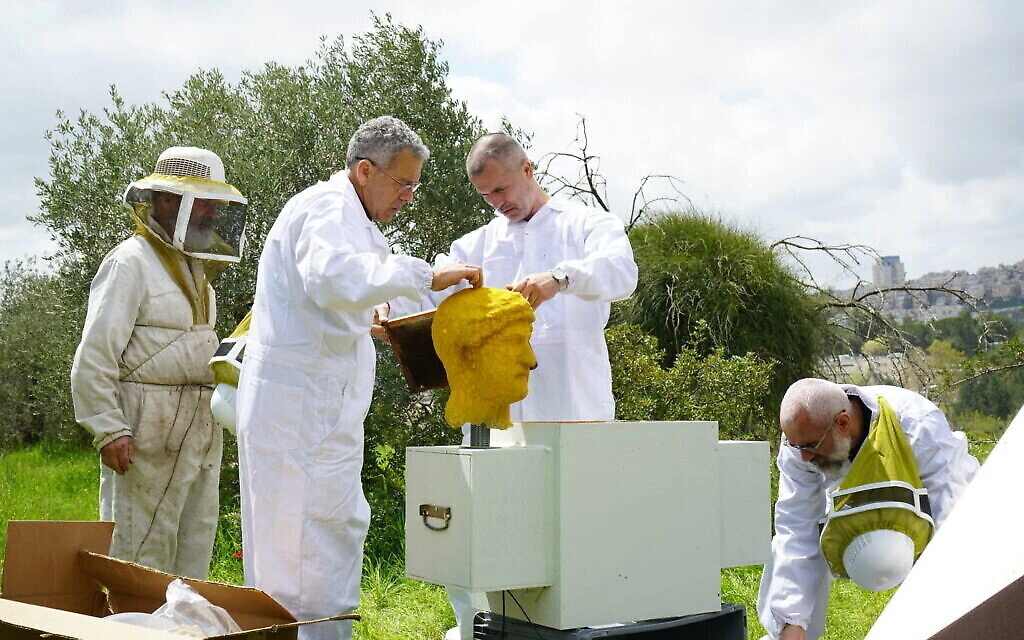Nightmare of ancient armies: Anatolia’s mad honey
 Team members check on a honeycomb statue of the emperor Hadrian at Museum in Jerusalem, May 2023. (Photo courtesy Israel Museum/ Natalie Peselev Stern via The Times of Israel)
Team members check on a honeycomb statue of the emperor Hadrian at Museum in Jerusalem, May 2023. (Photo courtesy Israel Museum/ Natalie Peselev Stern via The Times of Israel)
Located in the northern region of the Black Sea, the Pontus Mountains were notorious in the ancient world not only for their natural beauty but also for their toxic honey.
The honey produced in these mountains led to significant losses for both Greek and Roman armies.
Xenophon, effects of mad honey on Greek mercenaries
The mad honey of the Pontus Mountains was brought to prominence by the Athenian philosopher and historian Xenophon.
Following a failed rebellion against Persian King Artaxerxes II in 401 B.C., Xenophon and his mercenaries had to pass through this region.
Xenophon provided a detailed account of the effects of this honey on his men, describing hallucinations, vomiting and diarrhea:
All the men who ate from the comb were driven mad; they vomited and had diarrhea, and were so weak that they could not stand. Those who ate a little acted like drunkards, and those who ate a lot behaved like lunatics, and even in death they acted like people out of their minds. The place was so thickly covered with men lying on their backs that it seemed as if it were the aftermath of a defeat, and their spirits were low.
Xenophon
Rome, dark side of mad honey
Centuries later, the famed Roman commander Pompey the Great fell victim to the mad honey of the Pontus Mountains.
According to the Roman geographer and historian Strabo, Pompeius’ army suffered from the effects of this honey.
Strabo mentioned that a local group known as the Heptacometae used the honey as a weapon, successfully incapacitating part of Pompeius’ army:
“The Heptacometae killed three divisions of Pompeius’ army while they were passing through the mountainous region. They mixed the mad honey with water in bowls and scattered it on the roads, and when the soldiers drank the mixture and lost their senses, they attacked them and easily overcame them.”
Strabo

Modern science, mystery of mad honey
Research in the late 19th century clarified the toxic properties of mad honey. A study conducted in 1889 revealed that the toxic effects of Pontic honey were attributed to andromedotoxin, a substance collected by bees from the yellow-flowered Rhododendron luteum.
The honey produced by bees in areas dominated by Pontic rhododendrons during May and June contained dangerously high levels of andromedotoxin.
These ancient accounts of mad honey’s impact on armies throughout history illuminate the mysterious nature of the Black Sea region.



